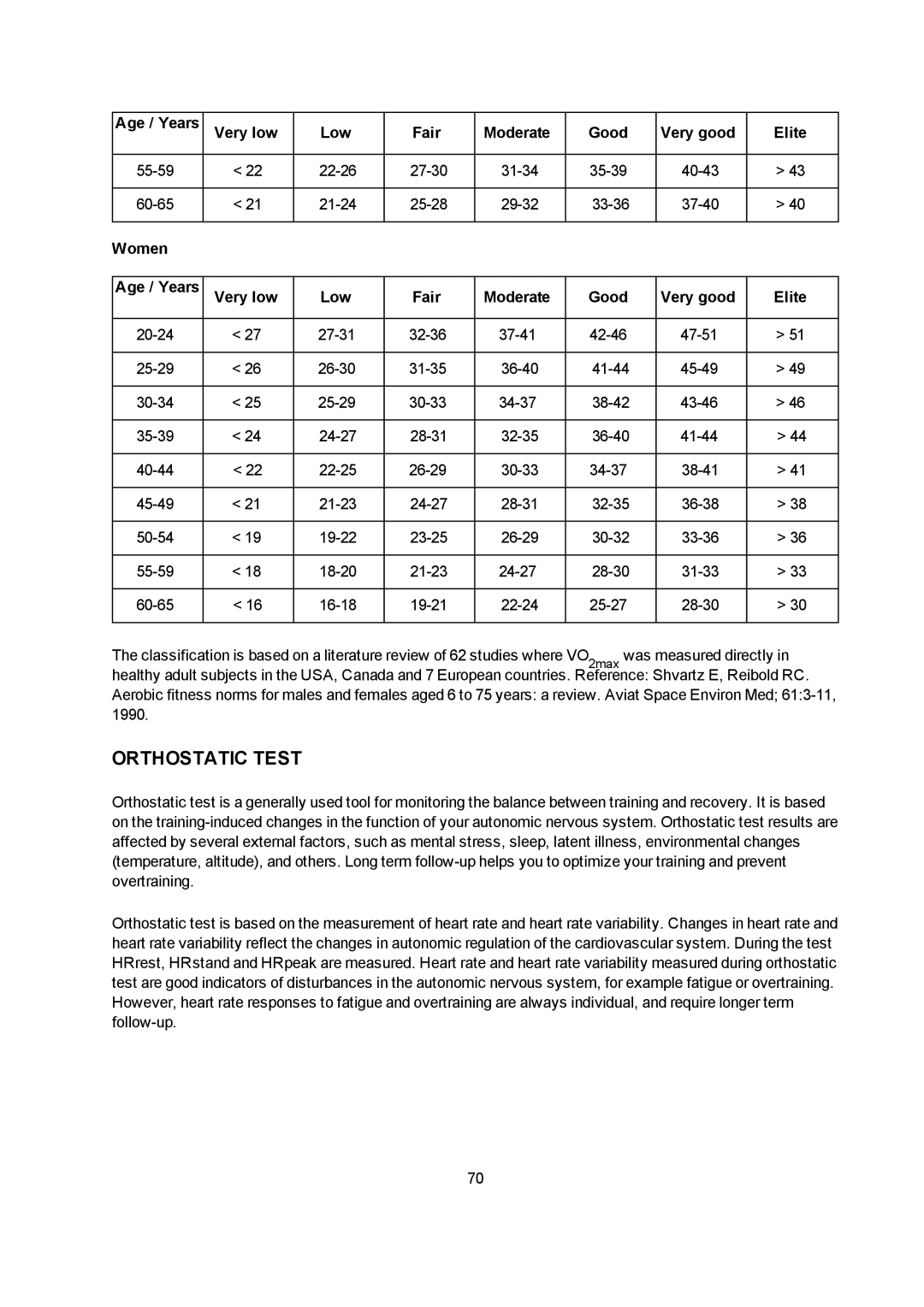Age / Years | Very low | Low | Fair | Moderate | Good | Very good | Elite |
|
|
|
|
|
|
|
|
< 22 | > 43 | ||||||
|
|
|
|
|
|
|
|
< 21 | > 40 | ||||||
|
|
|
|
|
|
|
|
Women |
|
|
|
|
|
|
|
|
|
|
|
|
|
|
|
Age / Years | Very low | Low | Fair | Moderate | Good | Very good | Elite |
|
|
|
|
|
|
|
|
< 27 | > 51 | ||||||
|
|
|
|
|
|
|
|
< 26 | > 49 | ||||||
|
|
|
|
|
|
|
|
< 25 | > 46 | ||||||
|
|
|
|
|
|
|
|
< 24 | > 44 | ||||||
|
|
|
|
|
|
|
|
< 22 | > 41 | ||||||
|
|
|
|
|
|
|
|
< 21 | > 38 | ||||||
|
|
|
|
|
|
|
|
< 19 | > 36 | ||||||
|
|
|
|
|
|
|
|
< 18 | > 33 | ||||||
|
|
|
|
|
|
|
|
< 16 | > 30 | ||||||
|
|
|
|
|
|
|
|
The classification is based on a literature review of 62 studies where VO2max was measured directly in healthy adult subjects in the USA, Canada and 7 European countries. Reference: Shvartz E, Reibold RC. Aerobic fitness norms for males and females aged 6 to 75 years: a review. Aviat Space Environ Med;
ORTHOSTATIC TEST
Orthostatic test is a generally used tool for monitoring the balance between training and recovery. It is based on the
Orthostatic test is based on the measurement of heart rate and heart rate variability. Changes in heart rate and heart rate variability reflect the changes in autonomic regulation of the cardiovascular system. During the test HRrest, HRstand and HRpeak are measured. Heart rate and heart rate variability measured during orthostatic test are good indicators of disturbances in the autonomic nervous system, for example fatigue or overtraining. However, heart rate responses to fatigue and overtraining are always individual, and require longer term
70
